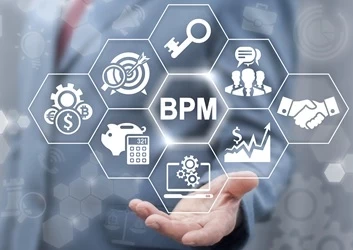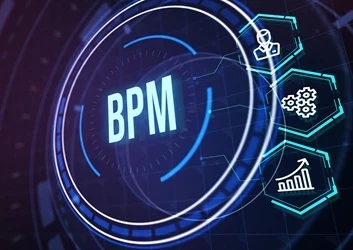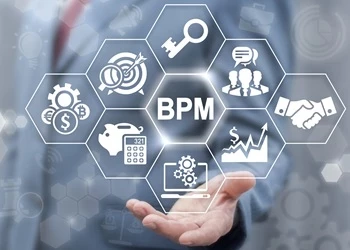"Credibility is hard to get and easy to lose" - Establishing your BPM CoE in the company (Part 5)
Add bookmarkBuilding the Foundations for a BPM CoE – Part 5
|
In the first column in this series I asked the question "Do you need a BPM Center of Excellence?" In the following columns in this series I talked about "Building the Foundation for a BPM CoE" and proposed what I believe are some of the fundamental questions that need to be answered in determining if a BPM CoE could be helpful. In this fifth column in my BPM CoE series I pick up from that point and assume that your company could benefit from a BPM CoE and that you are interested in considering how to move forward. So what do you need to succeed? Of course you will need executive sponsorship, funding, a clear mandate and open positions. All the basics that are needed for any new operation in a company are needed here. And, I will assume that you have set the foundation for the BPM CoE and you have one or two willing business managers who want to work with you to make this succeed for both them and you. |
|
Also, assuming a BPMS is in place, you will at this point have a relationship with the vendor and the authority to govern its use for a segment of the business operation and its processes. Together, this forms the foundation you need to even consider succeeding.
Credibility
With this in place, you need to define and build your BPM CoE "brand" in the company. You need to establish credibility. That is critical if you want anyone to trust the CoE and any advice that its members may give. This is strictly a marketing need. No one can use your services if they don’t know they exist.
Second, no one will use your services if they don’t have confidence that you can and will help them. You will need to build the case that you can help them reduce risk, save time, create a business centric product that is accepted and finally save money.
Credibility is hard to get and easy to lose. One failure can wipe out ten successes. So, you need to be careful if you want to build credibility within your company. This can only be done one way – you need to be careful how you pick the projects the CoE will support.
Choosing the right project: Is the project set up to succeed?
- Is the sponsor really behind the project and using help from the BPM CoE?
- Does the project have a well-defined objective? What is it? Is it realistic?
- Is the objective doable without a stretch or a miracle? What assumptions do you need?
- Is the outcome measurable? Get approval on the approach to measurement and the formula.
- Is the scope reasonable? Do not take on any projects that boil the ocean or reach too far.
- Is management willing to give you the time and resources you need to be successful? Will they support what you think are reasonable estimates? Under estimated or underfunded projects are clear losers – estimates by people who have no real idea about BPM or BPMS should be avoided.
- Will the business user give you sufficient access to managers and staff? An hour here or there is not good enough – business must partner with the team and give the time to make certain the solution works the way they want it to. This is where BPMS / BPM projects often fail.
- Do the people in the business area want this to succeed? Realistically, what is in this for them? If you were them would that make you want this to succeed?
- Do you have the right staff in the CoE to succeed? You need experts for your first projects to reduce your risks.
- Do you have the flexibility to deal with unforeseen events? – Sickness, unplanned (as of now) vacations, special dates (such as month end closing or year-end closing), vendor or technical issues, etc. Hard deadlines are high risk in projects for new CoEs unless the deliverable can be broken into parts and delivered when ready. That however, does not mean you have unlimited time or do not have to live up to commitments. But sometimes the unforeseen is the norm and things need to be flexible.
- Can you back out if anyone fails to live up to their commitments? This is the toughest one. But, if you cannot control the situation and it is driving toward a failure, you must work with the sponsor to cancel the project.
If the answer to these questions is yes, you are good to go. If some answers are no, you need to make a tough decision. I urge you to take the low risk road, but that is a call you must make.
Branding and Advertising
Any new group in any company must decide how they will fit in and how they will provide needed benefit – find a need and fill the need. If you try to encroach on another group’s space the road will be hard and rocky and success is a real challenge. So, don’t over reach in establishing your place. Once defined, this role and its services will define the way the BPM CoE is viewed.
The key fact is that the BPM CoE is a service organization that offers specialized skills to help people succeed in using BPM and BPMS to deliver either improvement or in a broader sense, transformation.
This sense of service is the key behind establishing the new BPM CoE’s "Brand" in the company. You can promote knowledge and skills or not. You can be a business partner or a technology group. And the list goes on. There is no right or wrong brand for a BPM CoE. It simply depends on the needs of the company and the role the CoE will play.
If you are a technology group focused on BPMS, OK. If you are a business modeling group that is there to deliver improvement, OK. If you are a process strategy group, OK too. But, be something (specialize in what you think your target clients want) and do not try to be all things to all people – at least not initially.
Promoting the BPM CoE
With your branding defined, you will now need to promote the new BPM CoE in the company. This is pure sales and with it comes advertising. The company managers must know who is in the BPM CoE, why it exists and why they should take the time to work with it.
- Who do you want to sell the BPM CoE’s services to? – What business units and what managers?
- What do you want to sell to each? – One size seldom fits all. So, what do you think each wants help with?
- Why should anyone in the company trust your new BPM CoE? Why should they consider BPMS?
- How can you get their time to tell them your "story"?
- How can you begin to build a close partnership relationship with them?
- How can you get the word out?
- What is your value proposition?
The BPM CoE is essentially an internal consulting operation and it needs to constantly be promoted – just as any consulting operation. You may even be competing with external consulting groups for business in your company – especially if the cost of your staff will be charged back to the business area.
Even if you are not competing with outside consultants, unless the business units have to use your support, you may well be competing with other internal groups. So, what is your advantage? What have you done to prove you can help? What have you done to be trusted?
KPIs and Bragging Rights
Like every business unit you change, the BPM CoE will need to have performance targets and individual project targets. Measure and improve – take your own medicine. Then as you succeed tell everyone. Start publishing statistics. Start sending out notes that include testimonials from business managers and staff. In short, in a nice way – brag.
Invest in both training and certification for the BPM CoE staff and then tell everyone about it. The bottom line is that your successes will be a big deal if you make them a big deal. If you don’t promote the BPM CoE, it will be a secret and it will evolve into a background activity that eventually it will die as other groups form BPM CoEs that actually compete with yours. So, continued success in delivering benefit is an absolute requirement, but promoting the CoE and these successes is also critical to the longevity of the BPM CoE.
Read the full series:
Part 1: How do you know if you need a BPM Center of Excellence?
Part 2: Getting the foundations right for a BPM CoE means thinking about the business 2)




















